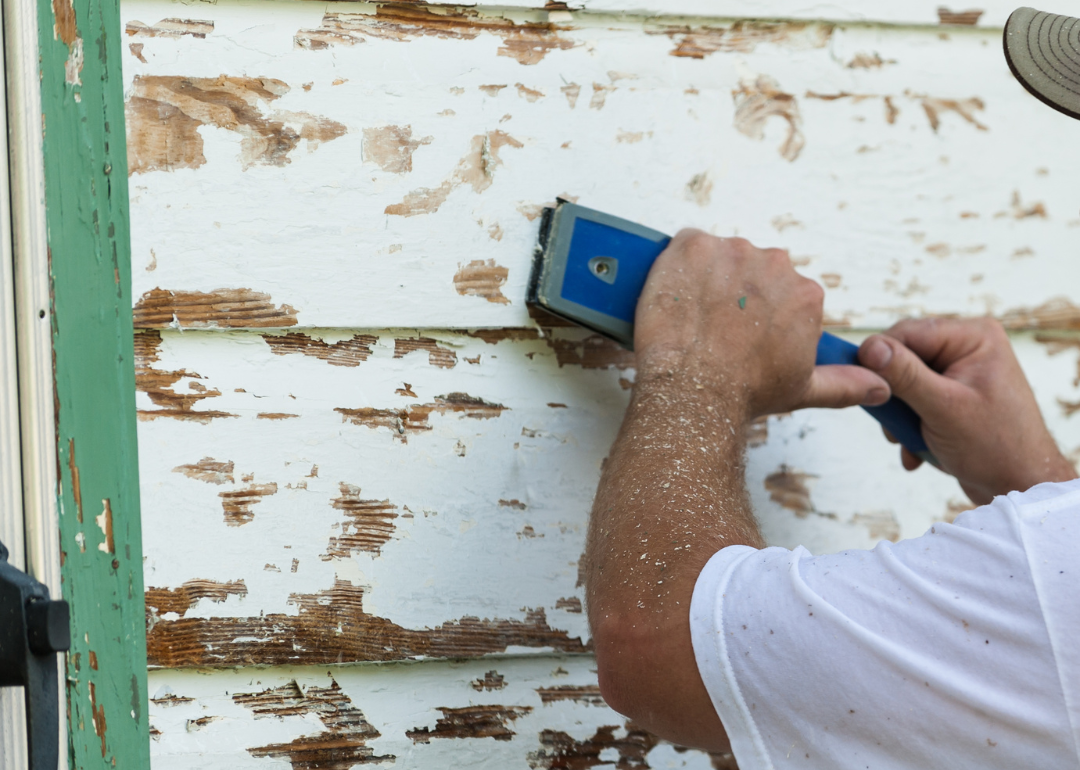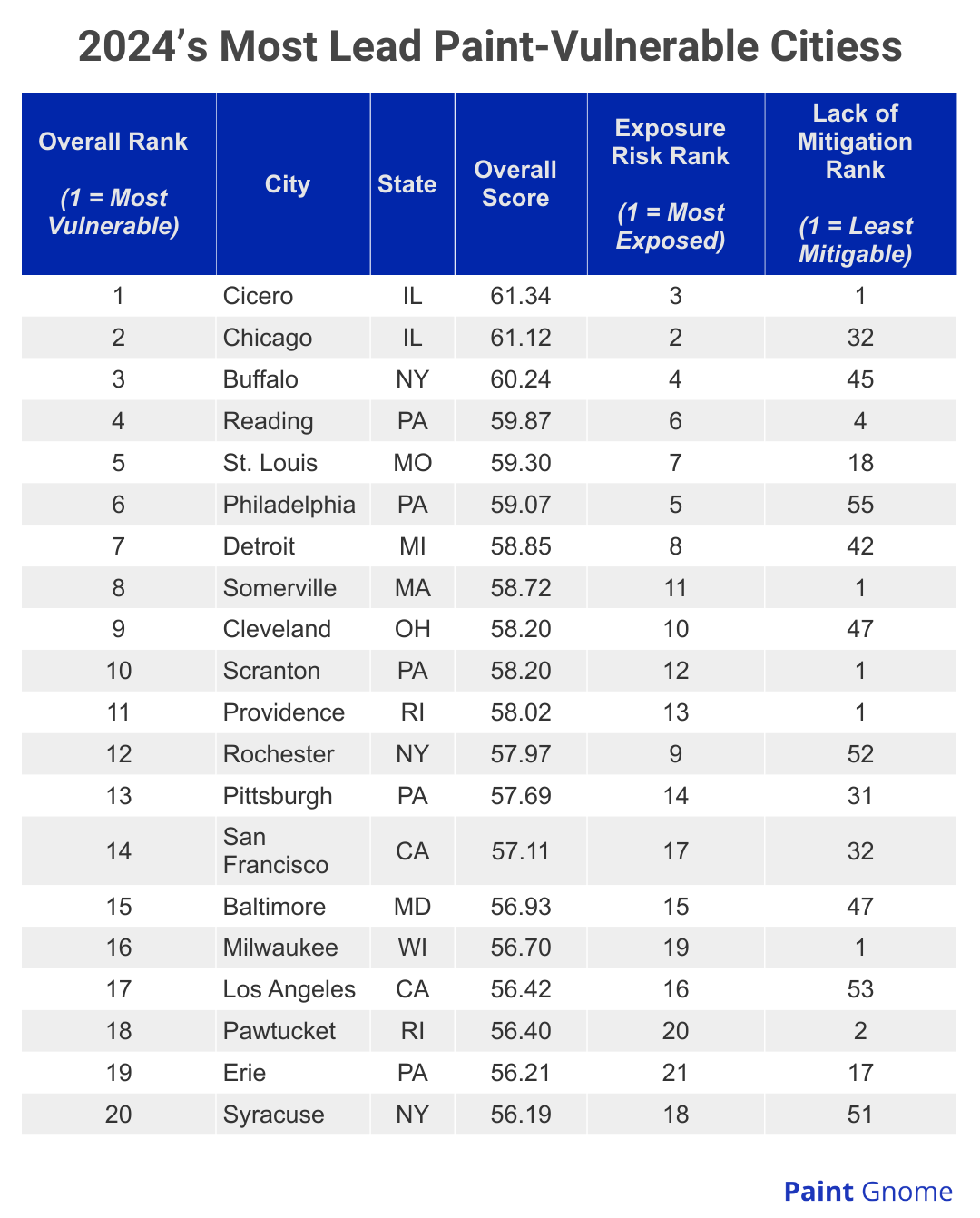
2024's most lead paint-vulnerable cities
2024's most lead paint-vulnerable cities
Around 35% of U.S. homes contain lead paint, so in which cities is the risk of lead paint exposure — and the need for a lead paint inspection — greatest?
To find out, Paint Gnome ranked 2024's Most Lead Paint-Vulnerable Cities. With over 410,000 annual deaths in the U.S. attributed to lead contamination, the EPA is looking to tighten regulations on lead paint in homes and childcare facilities.
We compared the 500 biggest U.S. cities based on two categories: the number and share of homes built in the years when lead paint use was common and access to certified lead-based paint inspection, risk assessment, and abatement firms, among eight total metrics.
To learn how we ranked the cities, see our methodology below.

The upshot
Northeastern and Midwestern cities with older homes like Buffalo, New York (No. 3), and St. Louis (No. 5) finished among the most vulnerable places for residential lead paint. 13 states — plus Washington, D.C. (No. 58) — landed in the most hazardous half, including Connecticut, New Hampshire, New Jersey, New York, and Ohio. Every city representing Massachusetts, Pennsylvania, and Rhode Island scored in the top 100 most vulnerable cities.
Some cities — such as Chicago (No. 2) and Philadelphia (No. 6) — stand out with abundant lead paint inspection and abatement professionals. Despite a clear need, smaller cities like Windy City suburb Cicero, Illinois (No. 1), Somerville, Massachusetts (No. 8), and Scranton, Pennsylvania (No. 10), lack professional lead paint removal services.
Younger cities and suburbs out West like Castle Rock, Colorado (No. 498), and Surprise, Arizona (No. 499), finished at the healthier end of our ranking alongside Frisco, Texas, as the least vulnerable. Every city in Idaho, New Mexico, Nevada, and Arizona — except Tucson (No. 242) — scored in the safer half. Most homes in these cities are not old enough to have prevalent lead paint hazards.
Behind the ranking
First, we determined the factors (metrics) that are most relevant to rank the Most Lead Paint-Vulnerable Cities. We then assigned a weight to each factor based on its importance and grouped those factors into two categories: Exposure Risk and Lack of Mitigation. The categories, factors—for which data was gathered for each of the 500 biggest U.S. cities—and their weights can be found here.
Finally, we calculated scores (out of 100 points) for each city to determine its rank in each factor, each category, and overall. A city's Overall Score is the average of its scores across all factors and categories. The highest Overall Score ranked "Most Vulnerable" (No. 1) and the lowest "Least Vulnerable" (No. 500).
Due to a significant number of ties in the "Lack of Mitigation" category, we grouped the cities into tiers (based on their actual category rank) to simplify presentation.
Final thoughts: Schedule an inspection
Although lead paint was banned in the U.S. 46 years ago, around 35% of American homes still have traces of lead paint.
There is no "safe" amount of lead exposure. Lead poisoning can lead to serious short and long-term health consequences. Walls with lead-based paint — even under newer layers of paint — can be hazardous when manipulated.
The EPA is working to strengthen lead paint standards in homes, schools, and child care facilities — but lead paint removal can be a costly procedure.
Thankfully, the federal government awarded grants this year to some at-risk regions like Alameda County, California, and the state of Minnesota to offset the expenses of lead paint abatement. Some cities like Cleveland, Ohio (No. 9) and Syracuse, New York (No. 20), have also been prioritizing investigations of lead paint violations in rental units.
It's important to schedule a lead paint inspection in older homes if you notice paint peeling or chipping or if you plan to remodel.
This story was produced by Paint Gnome and reviewed and distributed by Stacker Media.



